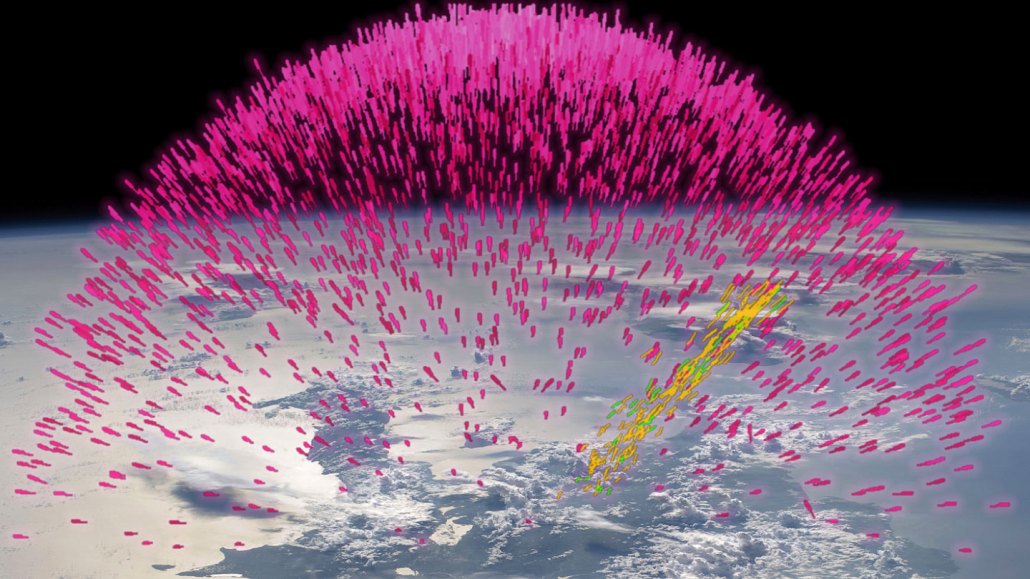Rare ‘dark lightning’ might briefly touch passengers when flying
Gamma-ray blasts from thunderstorms are the most energetic natural discharges on Earth

Dark lightning — gamma-rays (pink in this simulated image) that result from waves of electrons (one shown, yellow) colliding with atoms in the air — may sporadically strike airplanes and briefly expose passengers to radiation, new research suggests.
NASA Goddard Space Flight Center, J. Dwyer/Florida Institute of Technology







